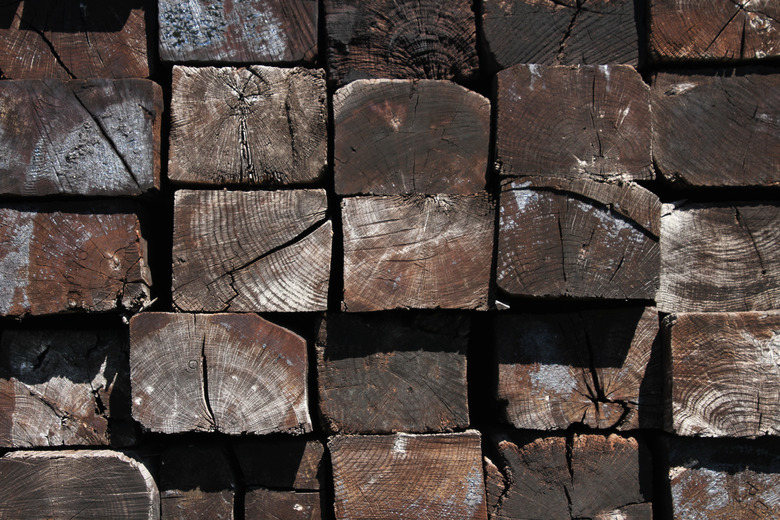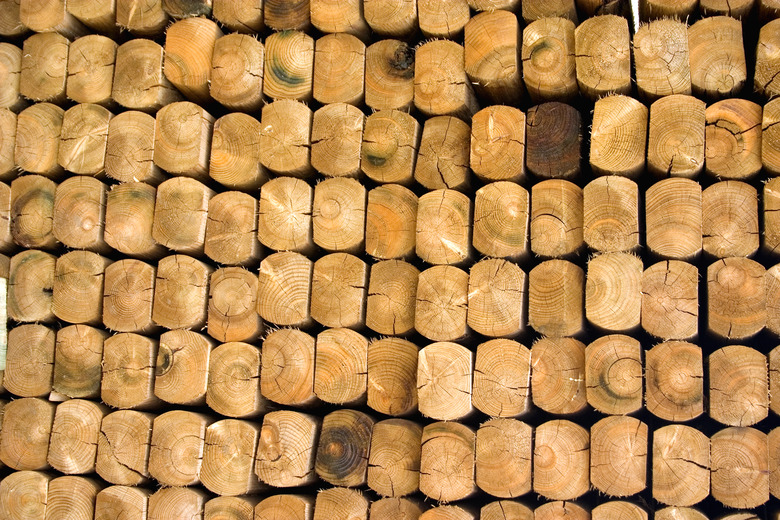How To Dispose Of Railroad Ties
We may receive a commission on purchases made from links.
In a country crisscrossed by a dense network of railroad tracks, many find the romance of the rails alluring, even succumbing to the trend of using discarded railroad ties in landscaping and garden design for a touch of rustic charm. But the weight and dimensions of these rail supports, along with increasing awareness of the chemical treatment involved in their manufacture, have many wondering how they should dispose of these toxic timbers.
Are Railroad Ties Safe?
Are Railroad Ties Safe?
According to the Railway Tie Association, wood ties make up more than 95 percent of the railroad ties laid in North America, and they're easy to come by. Sold by companies providing reclaimed railroad materials and offered by some garden centers, they've long been viewed as an acceptable, harmless element in landscape design. These landscaping timbers proliferate as retaining walls, fences, steps, flower boxes and as borders for raised garden beds — serving both functionally and decoratively.
But an increasingly informed public has begun to reject the use of ties preserved with toxic creosote, and because the U.S. Environmental Protection Agency (EPA) doesn't regulate the reuse of treated wood, risks are unevaluated by the agency. The agency addresses only the health risks to those who work as creosote applicators.
However, Oregon State University's National Pesticide Information Center notes that creosote is not registered as a wood preservative for consumer products or for use in raised-bed gardens. This resource also addresses the many factors that affect the plant absorption of preservatives as well as the potentially harmful impact of compounds leaching into soil and groundwater, including worsening the quality of local drinking water.
How to Handle Railroad Ties Safely
How to Handle Railroad Ties Safely
Touching treated wood or inhaling its dust can carry different degrees of toxicity or risk for each person. Risks increase with burning and cutting. Never burn creosote-treated wood products, and, since you probably don't know your sensitivity level, always wear pesticide-resistant gloves and long sleeves when handling railroad ties. Wear protective eyewear, hearing protection, coveralls, a respirator and work boots when cutting into the ties with a chainsaw, and always dispose of any sawdust created.
Additionally, you'll need to consider how work-intensive it will be to move these 8 1/2-foot-long timbers that weigh, typically, around 200 pounds. So, whether you're toting them out to the curb or transporting them to a landfill, you may find it necessary to have help or to don your protective gear before powering up your chainsaw — if you know how to wield one.
How to Dispose of Railroad Ties
How to Dispose of Railroad Ties
Homeowners who need to dispose of creosote-treated wood can usually do so through their city's ordinary solid waste collection, but rules vary among state and local governments. It's important to check with your waste management programs before taking action, especially since moving such heavy timbers is so difficult. For example, some landfills will take only ties that have been cut down to 4-foot lengths, and many limit the number of ties you can take. Other cities allow only curbside disposal on scheduled bulk pickup days.
Tip
Newer, unweathered creosote-treated railroad ties are more hazardous than old railroad ties. You should ask the state and local agencies you contact for guidance in determining the age of the ties, because some of their landfills may disallow disposal of newer ties they deem hazardous waste.

